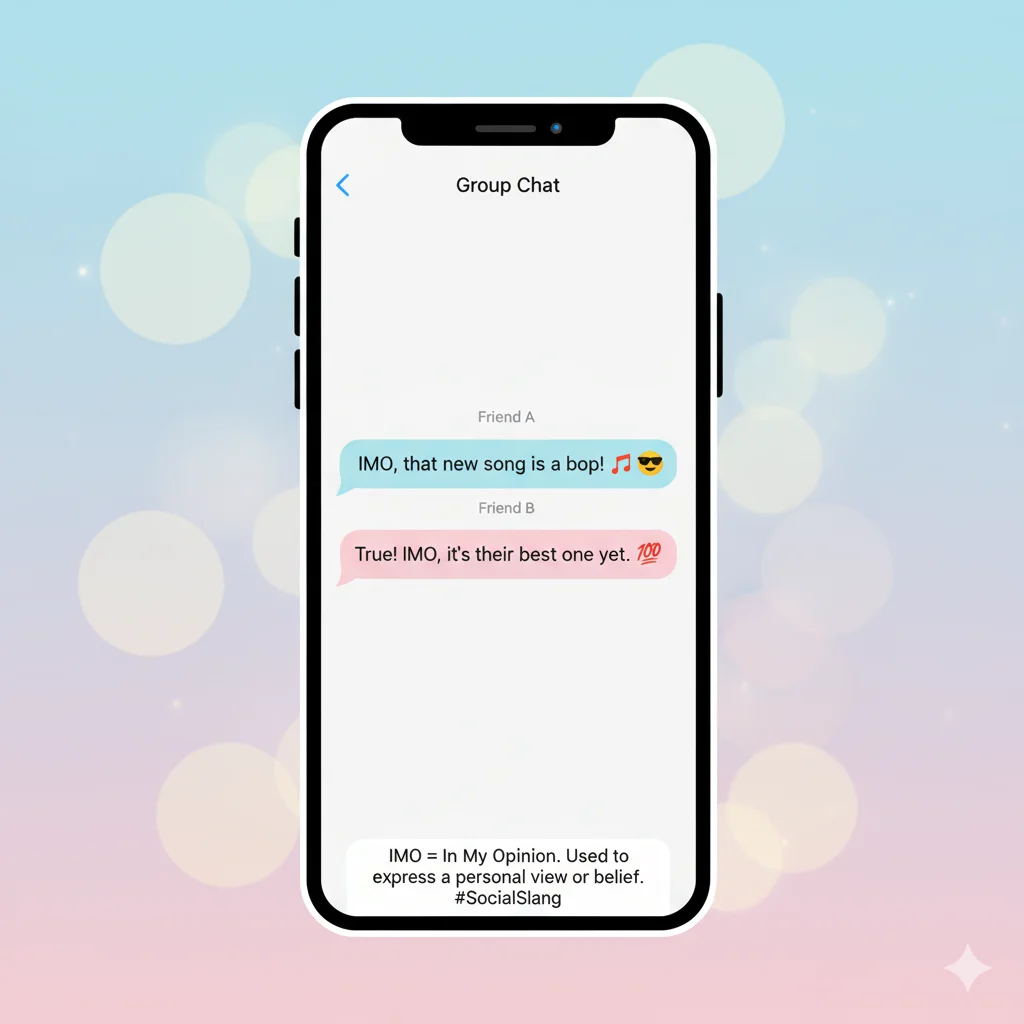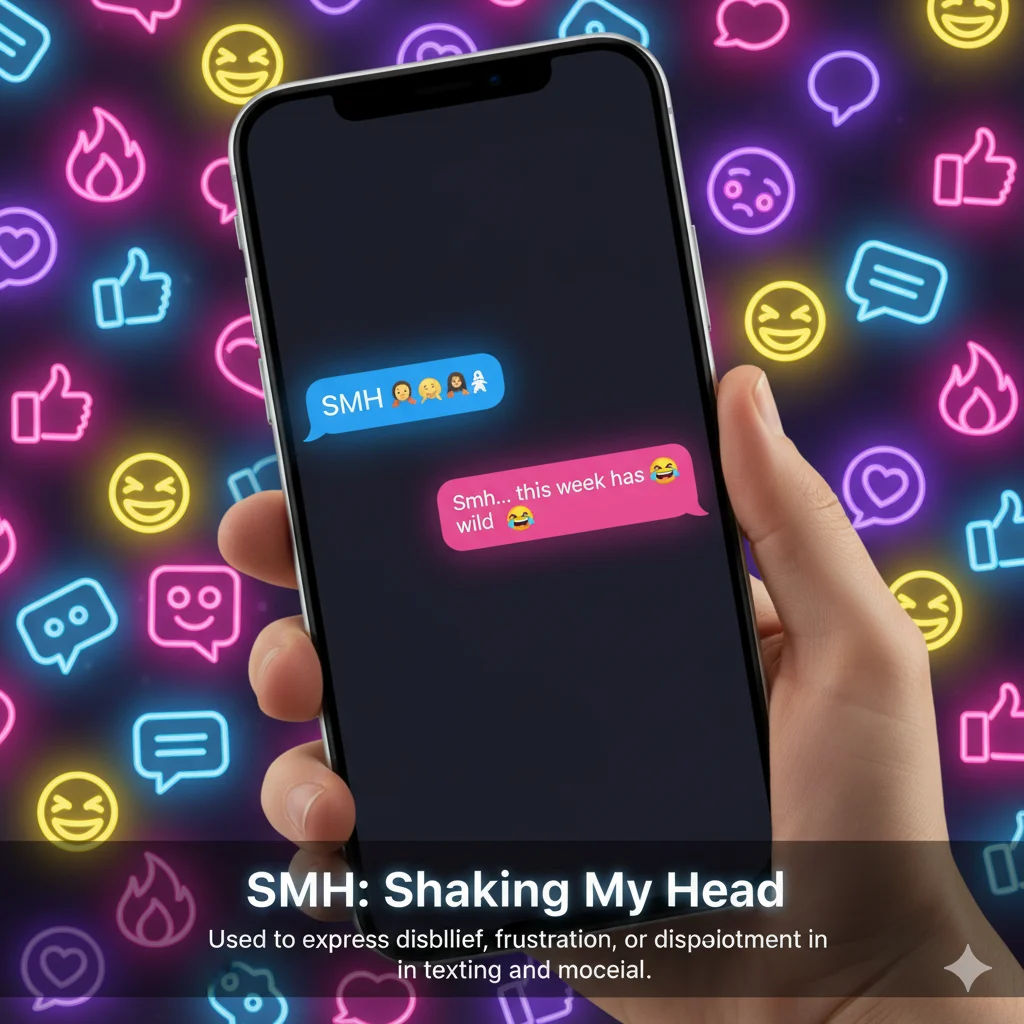IMO stands for “In My Opinion”, a popular internet acronym used to share personal thoughts or perspectives — especially in casual chats, online discussions, and social media posts.
Rizz Line Generator
You’ll often see people use “IMO” before or after a statement to signal that what they’re saying reflects their personal view, not a universal fact.
Example:
“IMO, pineapple absolutely belongs on pizza.” 🍍🍕
Let’s explore how “IMO” is used, where it came from, and how it compares to similar expressions like “IMHO” or “TBH.”
🧠 IMO Meaning in Texting and Online Conversations
The abbreviation “IMO” simply means “In My Opinion.” It’s a quick, polite way to express personal judgment or perspective.
- “In My Opinion” = I think / I believe / From my point of view.
- It’s often used in forums, comment sections, or chats to make statements sound less aggressive and more conversational.
✅ Examples:
- “IMO, this is the best Marvel movie yet.”
- “That outfit looks amazing, IMO.”
- “IMO, the new update is way smoother than before.”
💡 Tip: Adding “IMO” softens statements — it makes opinions sound open-minded instead of confrontational.
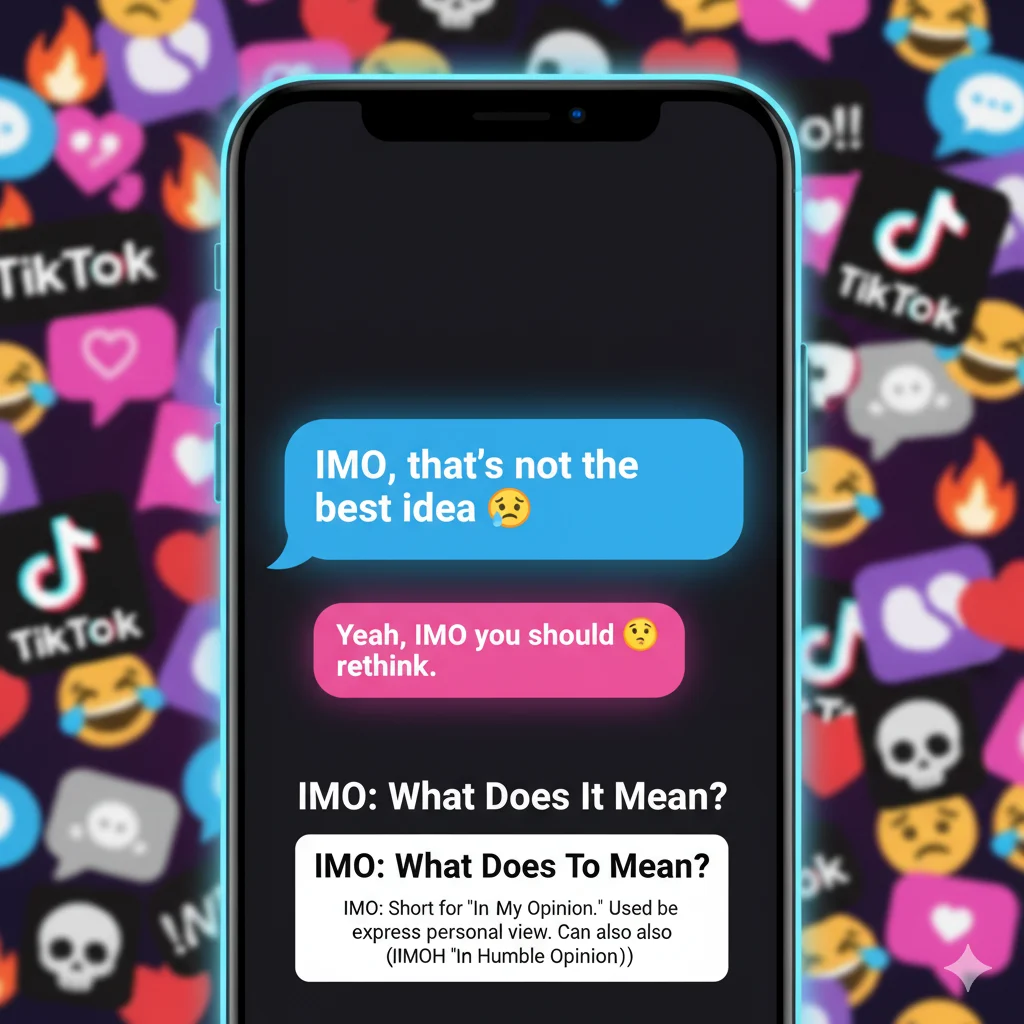
📱 Where Do People Use “IMO”?
You’ll find “IMO” used widely across different digital platforms:
| Platform | Common Use | Example |
|---|---|---|
| Twitter (X) | Sharing opinions quickly | “IMO, the new feature is overrated.” |
| Debating or discussing topics | “IMO, that theory doesn’t make sense.” | |
| Discord / Gaming | Expressing takes in chat | “IMO, mage class is still the best.” |
| TikTok / Instagram | In captions or comments | “IMO, this trend is here to stay.” |
| Email or Work Chat | Polite phrasing | “IMO, we should push the deadline.” |
💬 Whether you’re debating online or just chatting, IMO signals respectful communication — it tells others this is just my view.
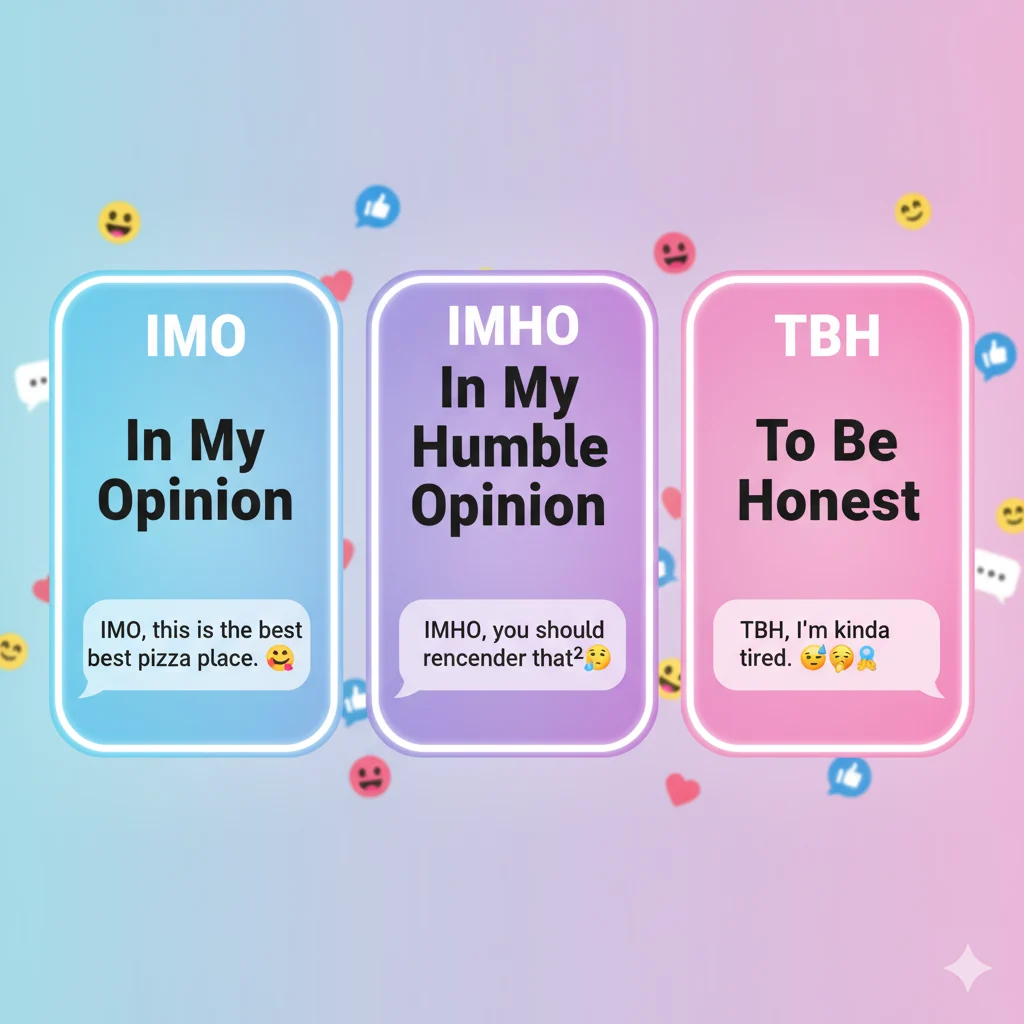
🔍 Origin of “IMO”
The abbreviation IMO originated in the early days of internet chatrooms and message boards — especially in the 1990s on platforms like Usenet and IRC (Internet Relay Chat).
- Before emojis and reaction buttons existed, people needed ways to express tone in text.
- “IMO” became a quick shorthand to show you’re stating an opinion, not a fact.
Over time, it spread across email, instant messaging, and later, social media.
📜 Historical note:
The related acronym IMHO (“In My Humble Opinion”) appeared soon after — often used sarcastically to mean “I’m about to say something not-so-humble.” 😅
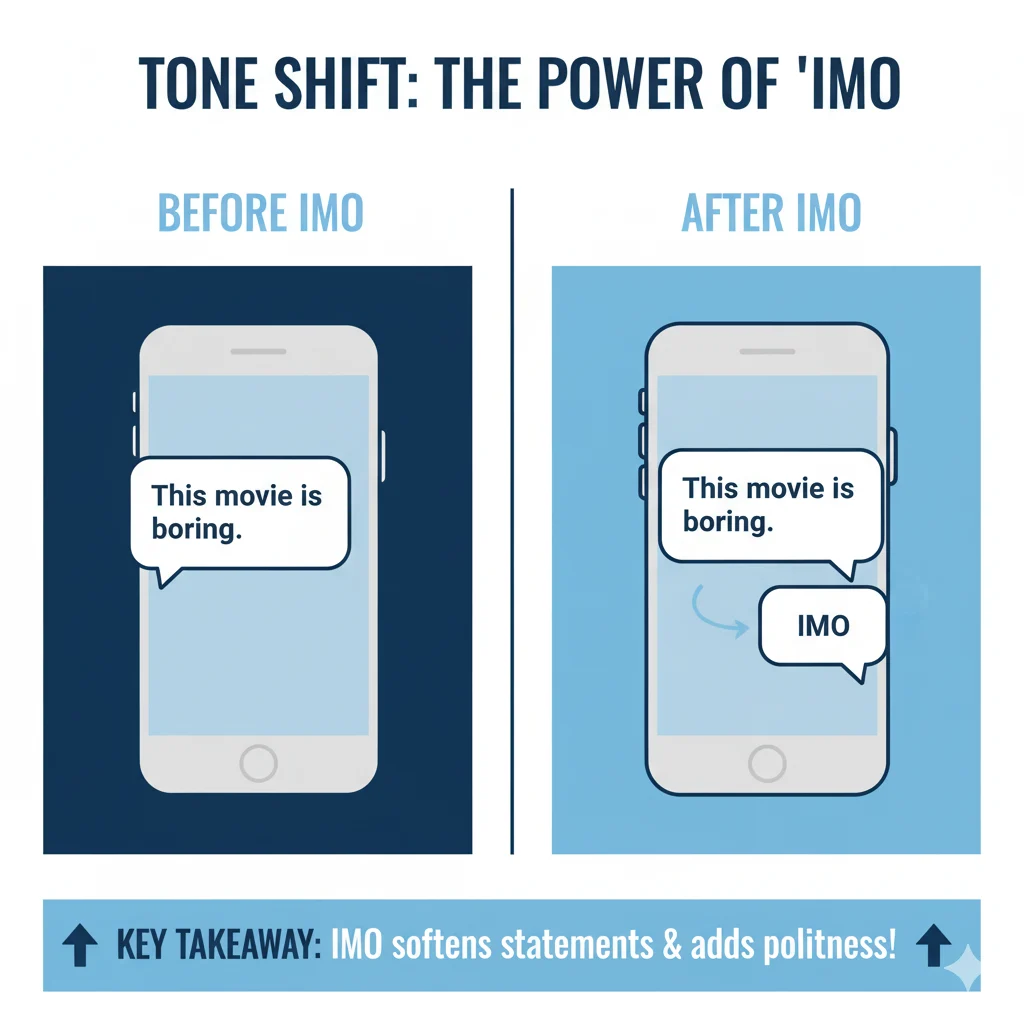
⚖️ IMO vs. IMHO vs. TBH vs. IDK
Here’s a quick comparison of common abbreviations people mix up with IMO 👇
| Acronym | Full Form | Meaning | Tone / Use Example |
|---|---|---|---|
| IMO | In My Opinion | Expressing a view or thought | “IMO, cats are better than dogs.” |
| IMHO | In My Humble Opinion | Same as IMO, slightly more polite or ironic | “IMHO, this movie deserves more credit.” |
| TBH | To Be Honest | Adds sincerity or emphasis | “TBH, I didn’t like that ending.” |
| IDK | I Don’t Know | Neutral, showing uncertainty | “IDK, maybe it depends on taste.” |
💡 Note:
While “IMO” and “IMHO” both show subjectivity, TBH emphasizes truthfulness, and IDK expresses uncertainty.

🗣️ How IMO Changes the Tone of a Message
Using “IMO” can completely change how a sentence feels online.
Compare these:
| Without IMO | With IMO |
|---|---|
| “This is the best game ever.” | “IMO, this is the best game ever.” |
| “Your idea won’t work.” | “IMO, your idea might not work.” |
| “That’s wrong.” | “IMO, that doesn’t seem right.” |
✅ Adding “IMO” softens tone, avoids arguments, and shows respect for differing opinions — a crucial skill in online communities.
💬 IMO in Professional or Work Settings
Though “IMO” began as casual internet slang, it’s now accepted in semi-professional communication, especially in internal chats like Slack, Teams, or Discord.
Examples in Work Context:
- “IMO, the new campaign strategy looks promising.”
- “IMO, we should test this feature before rollout.”
However, in formal emails or documents, it’s better to use:
“In my opinion,” “I believe,” or “From my perspective.”
💡 Pro Tip:
Avoid using too many abbreviations in professional writing — they can sound too casual unless your workplace culture encourages it.
🧩 The Psychology of Using “IMO”
Adding “IMO” to a sentence is more than grammar — it’s a social signal.
| Purpose | What It Shows |
|---|---|
| Humility | You recognize others may disagree |
| Softness | You avoid sounding like you’re arguing |
| Openness | You’re inviting dialogue |
| Clarity | You distinguish between fact and opinion |
In short, “IMO” helps maintain healthy online communication. It makes your tone sound friendly instead of forceful — a key reason it’s still popular after decades.
🌍 Global Usage: IMO Across Cultures
The term “IMO” is universally understood in English-speaking digital spaces, but interpretations can vary slightly:
| Region | Common Context | Example |
|---|---|---|
| US / Canada | Informal opinions, debates | “IMO, coffee beats tea any day.” |
| UK | Polite disagreement | “IMO, that rule’s outdated.” |
| Asia (global English users) | Seen in gaming and tech chats | “IMO, that update’s buggy.” |
| Europe | Used in memes & humor | “IMO, this meme wins the internet.” |
🌐 The universality of “IMO” shows how internet slang transcends geography — everyone understands opinion-based statements online.
⚡ IMO vs “In My Opinion” — Is There a Difference?
Grammatically, they mean the same thing. But context and tone differ slightly:
| Phrase | Use Case | Tone |
|---|---|---|
| IMO | Texts, DMs, memes | Casual / quick |
| In My Opinion | Formal writing or debates | Professional / serious |
✅ Rule of thumb:
If you’re texting friends → use “IMO.”
If you’re writing an article or email → spell out “In my opinion.”
💬 IMO in Memes and Pop Culture
In meme culture, “IMO” often appears in:
- Hot takes: expressing unpopular or funny opinions.
- TikTok captions: short, catchy personal views.
- Twitter debates: threads full of “IMO” takes.
Example memes:
- “IMO, water tastes different depending on the cup. 🥤”
- “IMO, dogs > humans.”
💡 Why it’s popular:
Short acronyms like “IMO” fit the fast, snappy tone of modern digital humor — they make opinions relatable and fun.
🧮 Common Mistakes People Make with “IMO”
| Mistake | Explanation | Correct Use |
|---|---|---|
| Using “IMO” aggressively | Defeats the purpose of being polite | “IMO, you might be wrong” (not “You’re wrong, IMO.”) |
| Using it in formal essays | Too casual for academic tone | Use “In my opinion” instead |
| Mixing IMO and IMHO randomly | Both work, but IMHO sounds more modest | Pick one style consistently |
💡 Always remember: “IMO” = soft, friendly, opinion-based.
🧠 Examples of IMO in Real-Life Conversations
Text Chat Example:
A: “The new iPhone looks the same as the last one.”
B: “IMO, the camera upgrades make it worth it.”
Social Media Example:
“IMO, morning workouts hit different.”
Gaming Example:
“IMO, support role players don’t get enough credit.”
These everyday examples show “IMO” as a universal tool for sharing thoughts politely.
🧭 IMO vs Other Acronyms in Discussion Culture
| Acronym | Full Form | Meaning | Use Case |
|---|---|---|---|
| IMO | In My Opinion | Opinion-based statements | “IMO, this is the best feature.” |
| FYI | For Your Information | Sharing facts or updates | “FYI, the event got rescheduled.” |
| ICYMI | In Case You Missed It | Highlighting something shared before | “ICYMI, the trailer dropped today.” |
| SMH | Shaking My Head | Expressing disappointment | “SMH, people still believe this.” |
Takeaway:
While IMO shares subjective thoughts, FYI and ICYMI deliver factual info — and SMH conveys emotion.
🧘 Why IMO Is Still Relevant in 2025
Even though new slang terms appear every year, IMO remains timeless because:
- It fits all platforms.
- It’s quick to type and easy to understand.
- It balances confidence and politeness online.
In the era of hot takes and viral opinions, “IMO” helps keep digital communication respectful — and that’s why it’s here to stay.
❓ FAQs About “IMO”
1. What does IMO stand for?
– IMO means “In My Opinion.”
2. Is IMO rude?
– No, it’s actually polite — it softens your tone and shows respect for others’ opinions.
3. What’s the difference between IMO and IMHO?
– IMHO means “In My Humble Opinion.” It’s similar but sounds slightly more modest or ironic.
4. Can I use IMO in professional emails?
– Only in informal team chats. In emails, spell it out as “In my opinion.”
5. What’s the opposite of IMO?
– “FYI” or “TBH” — since they focus on information or honesty, not opinion.
🏁 Conclusion
IMO is one of the most enduring acronyms in internet history. It means “In My Opinion” and is used to express personal views in a friendly, conversational, and respectful way.
From chatrooms to Twitter threads, “IMO” bridges casual communication with polite tone — proving that some slang never goes out of style.
So next time you share a thought online, remember:
👉 Add “IMO” — and keep the internet a kinder place for opinions.

